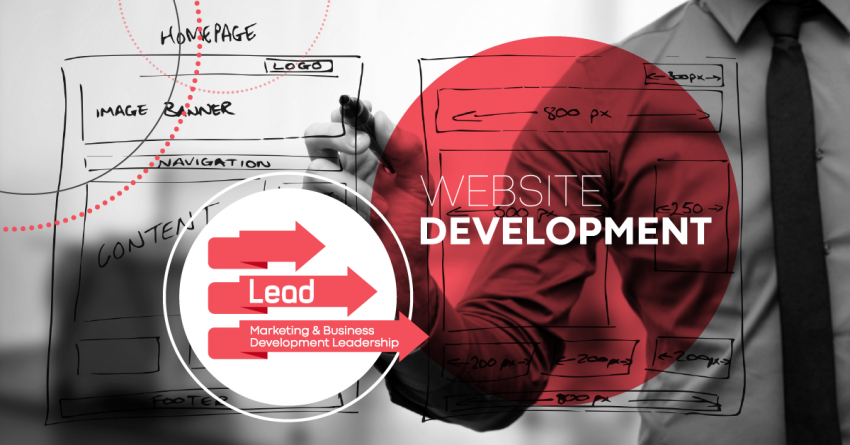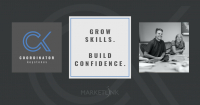Guidance for Marketing and Business Development Leadership
As the firm’s marketing leader, it is your responsibility to lead the website development team. This is no small task, and many marketing professionals have not previously had this opportunity. Where should you start? What should you expect? How can you keep the project moving forward?
The following ten steps will help you stay on course while keeping the overall company vision in mind.
- Let your strategic plan drive the process.
Remember all the time and energy you devoted to cultivating a proactive marketing strategy? Now is the time for that hard work to come to life. Your website implementation should be driven by those goals and objectives determined in your planning session. You should be able to identify the firm’s vision and allow your website to help:
- Generate leads by offering relevant and appealing content
- Recruit industry talent
- Educate your audience about your services
- Communicate your brand positioning to key audiences
- Establish your team as experts in the industry
- Generate leads by offering relevant and appealing content
- Know your audience.
Prospective clients, potential employees, and referral sources are all common audiences in the online space. Do you know what they prioritize when hiring an AEC firm within your discipline? Does your firm offer the services they need the most? You may think you know, but only direct research will provide the answers. Research on target audiences is the only way to gain an insight into your client’s needs and desires. Consistently talk to your clients. Use your findings to make sure your content and high-level messaging is relevant to the people who will ultimately hire you. - Diagram your site’s architecture and user experience.
How will your information be organized, and what functionality will you need? Consider why and how your viewers will be finding your site when making decisions about your site navigation. This understanding will help you determine which elements you want to appear on different pages. Prioritize clean and easy navigation for your site. From there, do you have information that will capture and ultimately convert them into a lead? Do you want to provide options for your visitors, or would it be better to simplify their experience?
Site architecture and user experience can be overwhelming. Just as a preliminary planning process is crucial to the outcome of your project, this phase is most important in the website design process. The decisions you make here can have tremendous implications on the final website. - Craft your website content.
Did you notice the suggestion of content before design? Many firms design the site and then fill in the content. A smart AEC website design will begin with the end in mind. The purpose of a website’s design is to present its content in a meaningful way, convey the brand, and set up an engaging visual environment. Today’s users digest content very quickly from a variety of devices; modern web design requires form to follow function and design to follow content—not the other way around.
Strategy and content should be your first priority. Design and development are essential to the success of your website design, but it should be featured to highlight the most important information. The content-first approach will not only help you better serve your audience’s needs, it will also provide a design that creates a more positive user experience, impacting usability, navigation, engagement, and ultimately conversion. - Implement a strategic design process.
The best AEC firm websites use their brand strategy to inform their website design choices. Strategic design means using imagery, typography, color, and layout to tell your firm’s story and engage your audience in a way that builds credibility and trust. Your website should communicate important brand attributes visually and reinforce your positioning, differentiators, and key messages.
Ultimately, design strategy forces you to take your brand in a more innovative direction and deliver a user experience that is sophisticated and rich in meaning. This design-centered strategy will increase how prospects and potential employees view your firm. - Watch the website come to life.
Now is the time for your marketing team to step into “responsive mode.” Your development team now has the task of turning static graphic designs into a fully functioning website. This process typically takes place on a separate development server that is not accessible except to those given special access.
Your key role in this phase is to be as responsive as possible to your web team so they can keep moving forward. - Testing and quality control.
Many would think that this is the end of their website journey. Isn’t it time to launch? Unfortunately, not yet. Websites are complex organisms, and every site has a testing and debugging process at this stage. Don’t be thrown off or discouraged—issues are absolutely inevitable. This is your team’s chance to visit every page on the site and click on every link—on multiple platforms. Don’t forget mobile, tablet, browser (Chrome, Safari, Firefox, etc.), and Mac vs. PC. Be on the lookout for visual glitches, programming errors, and erratic behavior. The more people you can throw at this task, the more bugs you will track down and stamp out before the site goes live. - Don’t forget training.
Your website is most likely built on a content management system (CMS), which makes it easy to add, edit, and remove content. While the most popular CMS platforms (such as WordPress, Drupal, and Joomla) are relatively intuitive, they come packed with a huge set of features and settings.
So before launch, gather all the people who will be working on your website for a training session. Create a training manual with screenshots of functions and processes. Screen record the process of doing this so you have visual representation of the process. Inevitably, people will forget how to accomplish certain tasks, and over time your web personnel may change. - Launch the new website.
Whether you have set your AEC website launch date at the very beginning of the design process or your schedule was more relaxed, launch day is when you will stop testing and transfer the files from the development server to the live server. Expect a few challenges. Something will go wrong. Plan for it, and have the team available to troubleshoot and respond to problems. Best practice is to launch at a time when traffic is minimal, such as Friday evening or over the weekend. During these times, very few people will even notice you are working through some issues.
It is recommended to not announce your new site to the industry on launch day. Give yourself some time—a few days or even a week—to streamline any problems and make sure everything is functioning properly. - Always promote and optimize.
Now your marketing genius can be used to promote, promote, promote. Consider emailing your clients and prospects to announce the site is live. Promote the site on social media. You might even put out a press release or direct mail piece. Use this opportunity to point out a few salient features. If you are moving into content marketing, include a link to your educational materials. If you have a blog, invite people to read it, subscribe, and leave comments.
Site optimization is crucial to the continued functionality of your site. Is it loading quickly enough? How is your traffic, time on site, and bounce rate? What pages are most popular, and do you understand why? There’s a lot to keep an eye on. After a new launch, you’ll also want to compare your numbers to those you were seeing on your old site. Is it performing better? Or does your new site need to be optimized in some way?
A website is not a thing you create and then leave alone. In fact, your marketing tasks are just beginning. You should be making continual, incremental improvements to its performance and messaging. Enjoy the process and reap the rewards.






